successes
23 Embeddable EdTech Tools for Medical Education
Online education is definitely a growing trend (Friedman, 2018). And, whether you’ve been teaching your classes online for a while, or you are just now learning how to teach in a distance education setting, there are a plethora of tools and resources to help you engage your students remotely. Many argue that of all the tools you might consider, video is perhaps the most critical (Thomas, 2020). That’s why we wrote this article! There are plenty of other tools, though, that can be utilized to aid in the delivery of a high quality remote medical education.
At DaVinci, we’ve discovered that streamlining the process students use to access, log onto, submit assignments, or communicate with each other and course faculty makes a big difference. Our experience shows that students are more likely to engage if they can navigate with fewer clicks and fewer open browser tabs. Wait… fewer tabs to manage? Sign me up!
These are just some of the reasons why we love the ability to embed content from all over the web in one place. We recognize that no single ed tech tool is going to do everything you want, but with Leo, you can use multiple tools in different ways and provide access to the content for your students from one place, whether it is an Event screen, Course screen, or a Course Discussion.
Now, we won’t lie to you, embedding content likely requires an unfamiliar process. But, it’s just a simple copy and paste process. You don’t have to know what any of it means or how to do it on your own. We’ll even give you a template and some basic instructions to make it that much easier!
You can actually embed almost anything from most websites. Granted, many tools make this much easier by generating an embed code for you. All you have to do is copy the code and paste it into Leo. Just look for the share and/or embed icons when using many of these tools. Here are some examples of what you might be looking for:

Some really awesome ed tech tools, though, don’t have an embed option. To overcome this, we’ve provided a little hack for these situations. Yep… you’re about to become a hacker. Add that to your CV!
Create your own embed code using this template (disclaimer: this doesn’t work with every website - but it’s always worth a try!). Copy the code below and replace paste url here with the appropriate URL.
paste url here” width=”100%” frameborder="0">
Once you have the code, just paste it into Leo, and voila… no more links and no more browser tabs. Just go to Leo!
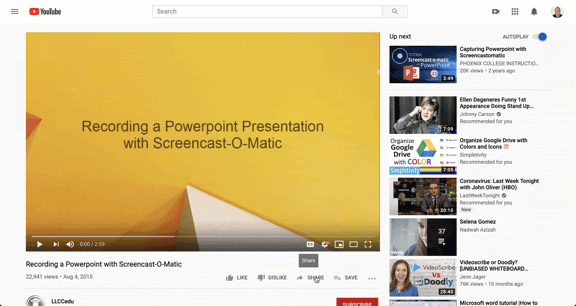
Here’s a list of some of our favorite ed tech tools and information on how they embed in Leo broken down by topic.
Video/Audio
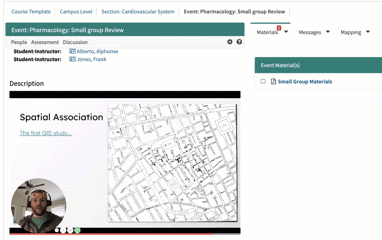
One of my new favorite tools, Loom allows you to easily record both your screen and webcam (we recommend leaving your webcam on for recorded lectures). They also provide a lot of options for editing and sharing your video once you're done recording, including the ability to generate an embed code. The best part… in the wake of the COVID-19 pandemic, Loom is offering their “Pro” platform for free to all educators!
To embed videos from Loom, click on the share icon, and choose the embed option.

Lecture Capture
Many schools today have invested in lecture capture solutions that are used to record live lectures in the classroom. However, most also offer the ability to create your own recordings from the confines of your home or office. Depending on the platform your institution uses, you’ll most likely have the ability to embed recorded videos as well. Though, be sure to check the permissions first, since many of these platforms require students to login first. Fortunately, Leo provides LTI integration for many of these tools (Panopto and Echo360, e.g.) - so students can access all of their lectures right from a link in Leo.
The world’s most popular video platform has a ton of features, including the ability to generate embed codes for any video on their platform, including YouTube Live streams. If you are creating your own content, you’ll need to upload those videos to YouTube. Also, keep in mind, YouTube Live doesn’t easily allow screen sharing - so if you are using a slide deck for a live presentation, you might want to consider other options.
To embed video from YouTube, click on “Share” and choose the embed option.
Vimeo is another of the more popular video platforms out there. It also generates its own embed code and provides a lot of options to customize the player. Also like YouTube, you’ll need to upload your content. Vimeo Basic (their free option) has a lot of great features, but you’ll have to upgrade to get access to advanced features like live streaming.
To embed videos from Vimeo, look for the share icon and copy the embed code.
While SoundCloud was developed as a music sharing platform, many educators are utilizing the service to post audio recordings of lectures online. Keep in mind, Soundcloud is an audio-only platform, but is definitely worth checking out as a way to provide instructions, introductions, etc. for students. One other nice thing about SoundCloud, is they have a mobile app which allows students to take your lecture recordings with them on the go!
To embed an audio file from SoundCloud, click on the share icon, choose embed, and copy the code.
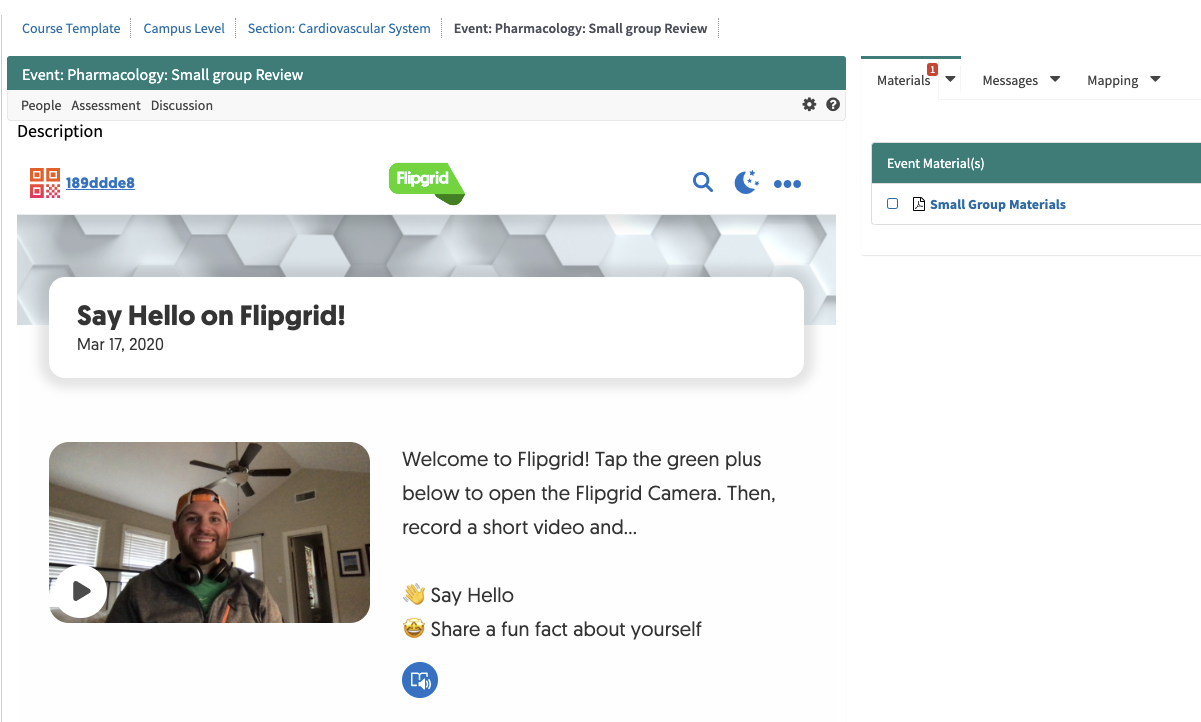
If you haven’t heard of FlipGrid yet, you might just be ready to fall in love with your new favorite ed tech tool! FlipGrid is a video discussion platform that is provided absolutely and forever free by Microsoft. With FlipGrid, the instructor records a prompt, and students respond - all with video. Student and faculty response to FlipGrid has been overwhelmingly positive, and they also have a robust online user community that is always coming up with new and innovative ways to utilize the platform. Just search twitter for #FlipGridFever and see what other educators are doing with this awesome ed tech tool.
With FlipGrid, you can embed an entire Grid (a collection of topics) or you can embed a single topic. Just look for the Share icon and choose the embed option.
Quizzing / Quiz Games
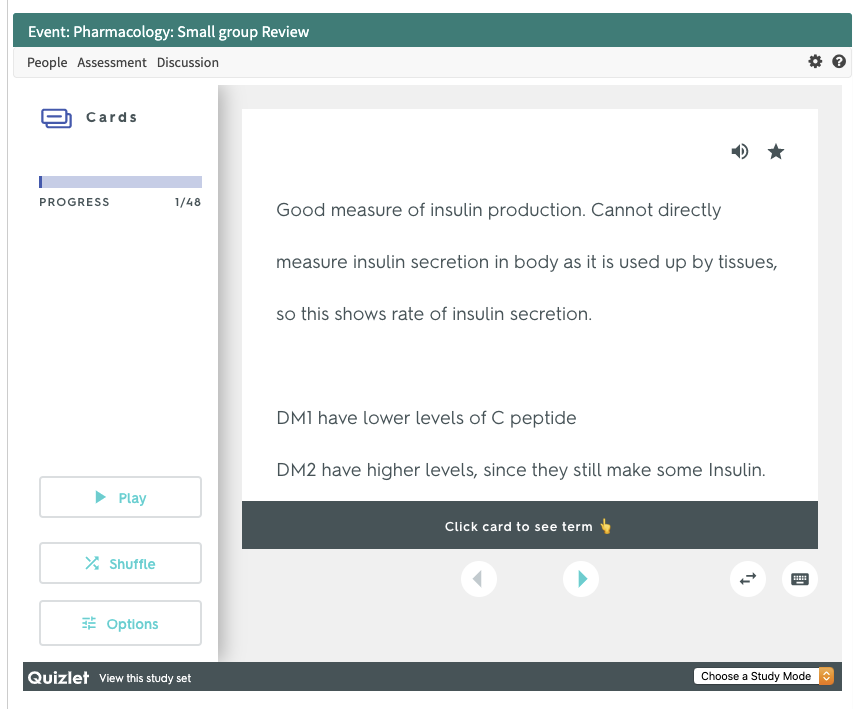
If you are looking for a way to integrate some simple exercises that allow your students to practice their knowledge of your content, then quizlet is a great option for you. It’s essentially a flashcard application on steroids. It allows you to create various sets of terms along with their description and/or images. Students can then study these sets in different formats - even as fun games.
To embed a quizlet set, just click on the ellipses icon and choose the embed option. Be sure to choose which study mode you want to use before copying and pasting the auto-generated embed code.

This is a very popular way to gamify instruction. Students are always trying to improve their scores! While this is similar to Quizlet, the questions are presented in multiple-choice format in a more game-like setting - complete with fun music and all! Quizizz is great for live events, but you can also embed practice quizzes for students to formatively assess themselves.
To embed a practice quizizz, you’ll need to use the little hack we mentioned at the beginning of this article. From the quiz page on the quizizz website, click on “Practice” and choose “Share practice link”. Copy the URL and paste it into the provided html code we mentioned at the top of the article.
Remote Presentations / Audience Response
If you are going to be giving remote presentations, the next two tools are for you! Nearpod allows you to build presentations (you can import slides directly from PowerPoint or Google Slides), and your students can enter a code to follow along with your presentation and will see only whichever slide the instructor is currently presenting. They also offer options to add interactive slides where students answer questions, or even draw their response - think of how you could ask students to identify certain elements of a diagram or an anomaly on a patient image! Keep in mind though, if you haven’t used a tool like this before, we definitely recommend taking some time to get familiar with it before using it the first time.
To embed a live nearpod presentation, choose the “live lesson” option and then click on the link icon. Copy the URL and paste into the iframe hack we provided at the beginning of this article. You could also just share the code, or the link with your students if you wanted. You also have the option from the “Preview” mode to choose the share icon and generate an embed code. This will allow students to complete the Nearpod in a self-paced environment - with no reporting options available (if you want to track students in a student-paced presentation, you’ll need to upgrade to the paid version).

Peardeck is similar to Nearpod in that students view the presentation at the pace of the instructor. They do offer a few more features in their freemium version before they ask you to upgrade, though. One nice feature of PearDeck is that it integrates really nicely with PowerPoint Online and Google Slides, so there is no uploading your PowerPoint slideshow - just add the interactive slides where you want in your presentation. I especially like the “draggable” questions that allow you to have students drag and drop icons in the correct location. With either Nearpod or Peardeck, you should definitely play around with all of the options and test the software before going “live” with a class. But this is a great way to augment a live video lecture - and because students see your slides, you don’t have to share your screen!
To embed a Peardeck presentation, click “Present Lesson” and then copy the shareable link. Paste it into the iframe embed hack we provided at the top of this article and then paste the entire code into Leo!
If you are a fan of audience response tools (I certainly am!), then you’ll love PollEverywhere. If you’ve ever used this tool, you already know that you can add polls to your slide decks in PowerPoint or Google Slides, but you may not know that you can also embed both poll results and polls themselves!
To embed a live poll, get the shareable URL by going to Present and then the Share tab. Copy this URL into the iframe embed hack we mentioned at the top of this article and paste the entire code into Leo. If you just want to embed the poll results - you can navigate to the embed option under the Present tab. Note: For security reasons, Leo does not support embedding anything using <script> tags. This is why their live poll embed code doesn’t work. </script>
Collaborative Boards
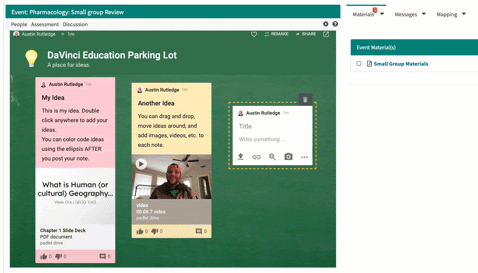
If you are looking for a place for students to collaboratively share ideas, or even content of their own, Padlet is a great option. It’s a little bit like the campus bulletin boards where people would put up ad posters or flyers - except instead of trying to find a new roommate or sell something, students can share ideas related to course topics or group activities. Just double click on a Padlet board to post a note, and notes can include multimedia like videos, images, and links to documents as well.
To embed a Padlet board, just click on Share, choose embed, and then pick the option that meets your needs. Note that the embedded Padlet is just as interactive, users will still be able to add ideas to the board form Leo.
Coggle is a mind-mapping tool that allows the user to connect similar concepts or create workflows. This could be extremely helpful when putting together differential diagnoses or determining steps for treatment. For each concept, you can add images and/or links to aid in visualization or linking out more content.
To embed a coggle mind map, just click on “public diagram” and copy the embed code. Note that the embedded coggle is not able to be edited.
Part Padlet, part Coggle, WebJets allows users to collaboratively share ideas. Webjets though, allows users the ability to organize those ideas in a lot of different ways (tables, lists, folders, and more). You also have the ability to attach documents, paste images, add videos from YouTube, and insert hyperlinks.
To embed a WebJet board, click on the ellipses next to the board name, publish the board, and paste the URL into the iframe code we provided at the top of this article. Then paste the entire code into Leo! Please note, like Coggle, this embedded WebJet board is not editable.
Productivity Suites

We are talking about Google docs, slides, sheets, forms, and even drawings. All of these productivity tools allow you to embed documents in other websites, and given the collaborative nature of these documents, it creates a lot of potential for creativity in how you use it in your courses and with your students. Consider having students collaborate on developing a differential diagnosis for a complex case in Google Slides - and then each group could explain their reasoning and present their case in a discussion board or via an online video conference. Embedded forms are a great way to get feedback from your students or even embed short formative quizzes. The possibilities are really limitless here considering what all you can do with the G Suite of tools.
These tools all embed in different ways, although a good place to start is to click on File and then go to Publish to the web. Here, you are likely to find some options for generating an embed code. Also, check out this helpful guide to hacking Google doc URLs - this applies to URLs in your embed code too!
Like Google docs, there are a lot of possibilities with Microsoft Office 365 - Word, Excel, PowerPoint, etc. Many of these online tools offer the ability to generate embed codes as well, although maybe not with as much flexibility as with G Suite. Be sure to check out Forms, Microsoft’s answer to Google’s product of the same name. It also offers the ability to create quick formative quizzes.
Like G Suite, all of these tools are a little bit different when it comes to generating embed code, start with choosing File from the menu bar and choosing the Share option.
Live Chat
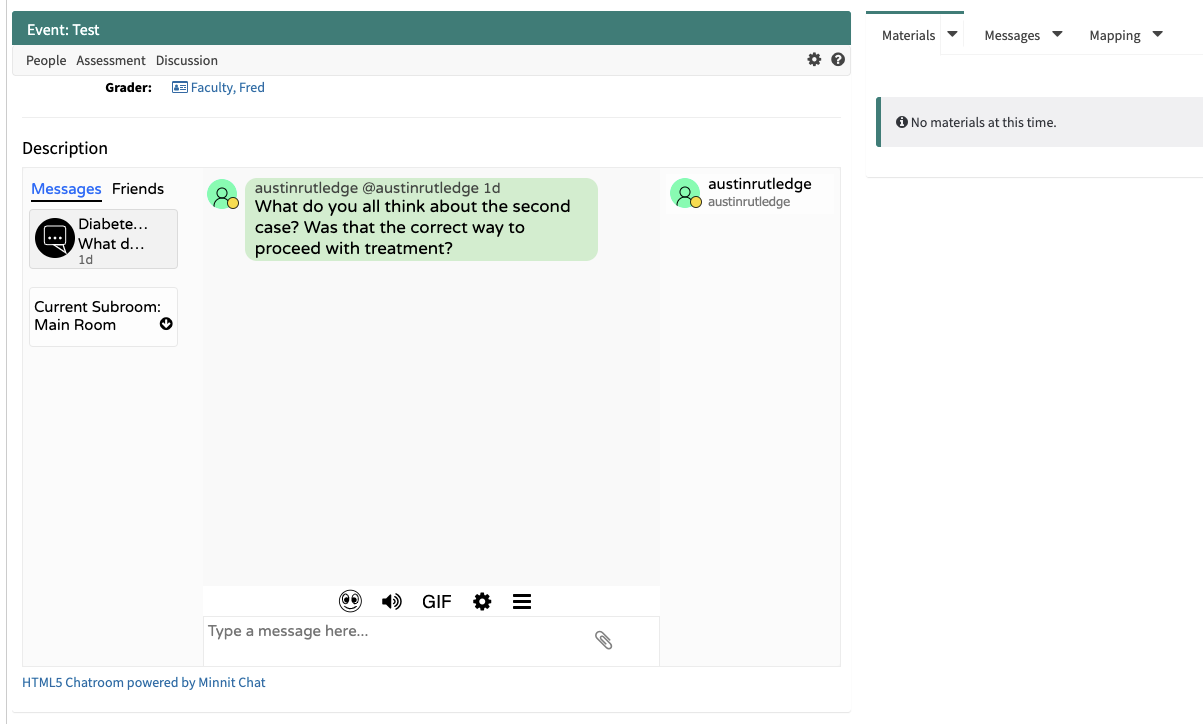
Chat is a popular feature today for people of all ages, and the ability to add a chat function to your course event is a game-changer for communication. Whether you are meeting asynchronously and you want a place for students to converse, or you are meeting live online via videoconferencing - having a backchannel for students to pose questions is certainly a helpful feature. Minnit even offers you the ability to export a transcript, attach files and images, and moderate chats as well. One thing to note, their free version is limited to 40 synchronous users. To get more, you’ll need to upgrade to their basic version.
To embed Minnit chat in Leo, just click on embed chat at the top of your created chat, and then choose the embed option to get an embed code to copy and paste.
Social

If you want to consider making your course or learning event more social, consider using a #hashtag! Believe it or not, Twitter has become a great space for those in the education sector to share ideas and learn from each other. Why not give your students that same opportunity?
To share posts from Twitter or other social media outlets, or a variety of social media outlets all in one place, then Walls.io might be just the ticket. It allows you to choose a profile, hashtag, page, album, etc. from which you want to share posts - and it will update your wall automatically with new posts as they show up. You’ve probably seen this type of thing at large events and conferences. But, let’s be honest here, many classes now are pretty large events! Get the students involved in sharing what they’ve learned, what questions they still have, or any other helpful ideas. You’ll just want to provide your students with a hashtag, or a place to post.
To embed a wall, open up your wall settings, choose the embed and display option, be sure to choose the iframe option, and then once you’ve customized your settings - just copy and paste!
Other

If you feel like annotated images, video, or 360° images or video would be helpful for your students, then ThingLink is a great option. ThingLink has been around quite a while, and they offer some really nice features. Basically, you are able to create multiple hotspots on an image or video that are designated by colorful icons. Students are then able to click on the icons to see a pop-up window with more information. That information could be textual, video, audio, or link to another website for more information. If you think about everything that could be done with 360° video in medical education, this feature might be a real game changer for your instructional content!
To embed a ThingLink, just click on the share button, and copy the embed code in the pop-up window.
H5P is an online elearning authoring tool that is embeddable on just about any website! They have over 40 different types of content you can create, from simple quizzes and hotspot questions to branching scenarios and interactive videos. The list really is worth a look, even if just to inspire you! You can test out the different types of content available on H5P.org, but for more extensive use, you may want to look for a way to host the H5P content on your own servers somewhere. You’ll still be able to embed the content in Leo just the same!
To embed H5P content in Leo, just click on the embed button below your content and copy the code!
Other (non-embeddable)
While the following tools are not embeddable, you can still provide the content or access to the content in Leo via a web link or through event or course materials. And these tools really were worth mentioning!
Quickly becoming one of the most popular study tools for medical students around the world, ANKI is flashcard-like software that allows anyone to make decks. Cards in your decks can include images as well as cloze style deletions from copied text. There are actually a lot of tips and tutorials from medical students on how to utilize ANKI. After becoming familiar with the software, you might consider creating decks for each of your lectures and providing those for students to download in the Event or Course Materials in Leo. Students could also share decks with each other via discussion boards as well.
Video conferencing tools
In a remote learning environment, you may want to host a live video conference. Whether it’s office hours or an actual learning event like a lecture or an online TBL event, you’ll need some type of video conference tool like Zoom or WebEx. Check with the IT department at your institution as many schools already have accounts set up with a video conference provider. One recommendation… always record your sessions so you can allow your students to review the content later!
If you are hosting an event online, be sure to post the URL for the online meeting in the Event Materials list on Leo.
Kahoot is a way to allow your students to compete against each other or other groups as they answer multiple choice questions as quickly as possible. The great thing about Kahoot, is it doesn’t have to be IRL (in real life). As long as your students can access the web, and know the Kahoot code, they can participate. If you have never experienced Kahoot, you should try it once just for fun - and it is fun, we promise. 😃
You can post the Kahoot code in the event description, or add the weblink to the Event Materials in Leo.











